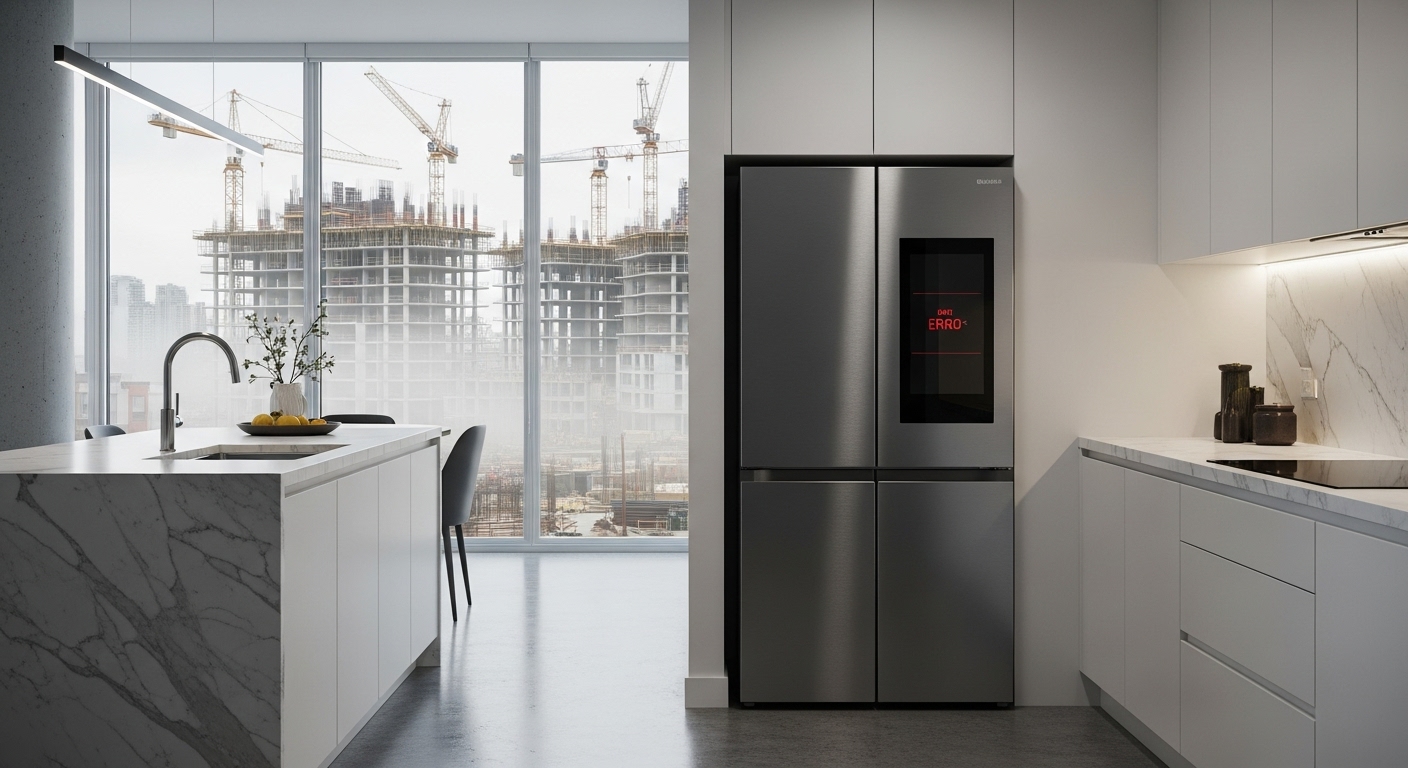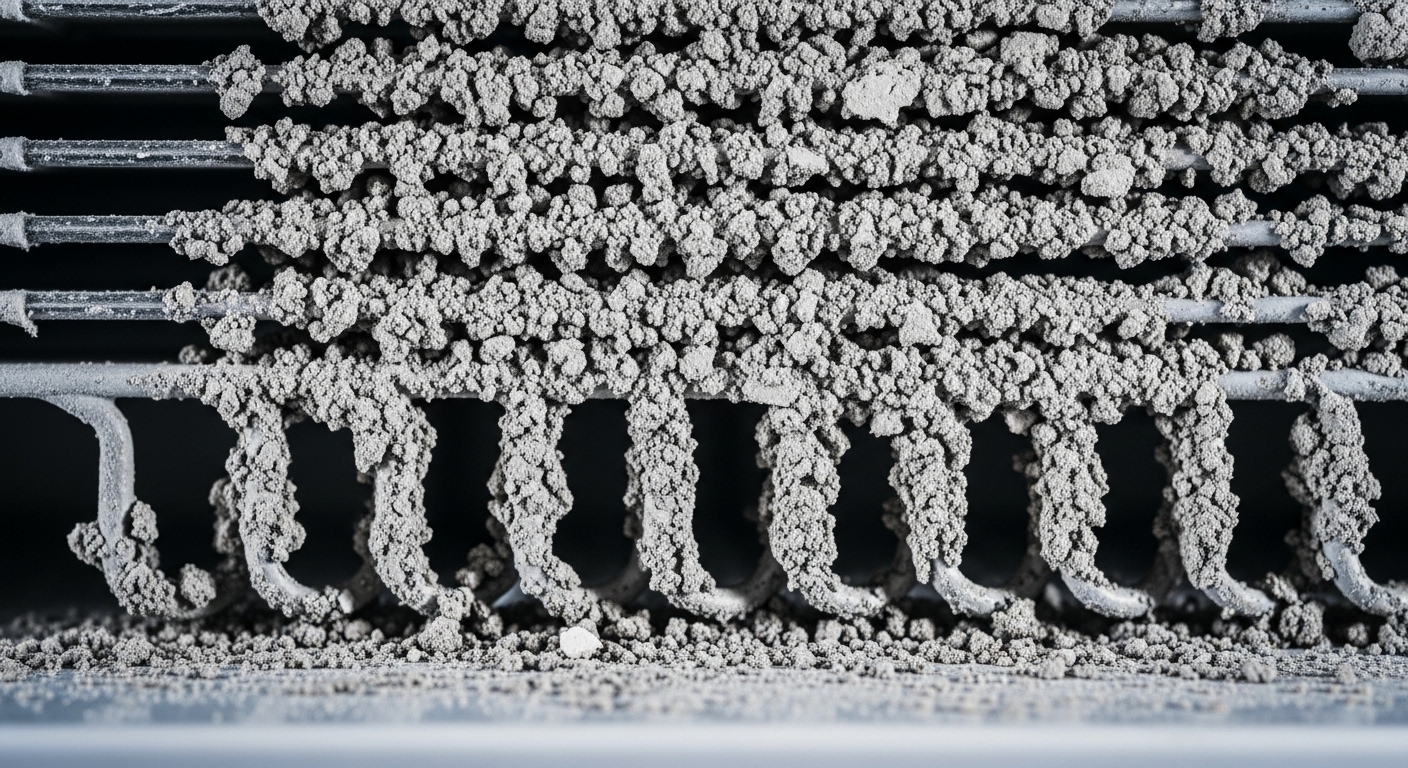Vancouver’s Construction Boom Alert: How New Development Dust and Vibrations Are Secretly Damaging Your Home Appliances (Plus the Filter Changes That Could Save You Thousands)
Tired of your expensive appliances mysteriously breaking down just months after moving into your dream Vancouver home? Vancouver’s unprecedented construction boom is creating a hidden crisis where dust and vibrations from new developments are systematically destroying home appliances in ways that most homeowners never see coming until their repair bills start piling up.
Picture this nightmare scenario: you’ve just settled into your beautiful new Vancouver condo, complete with top-of-the-line stainless steel appliances that cost more than some people’s cars. Everything seems perfect until your smart refrigerator starts throwing error codes, your washing machine begins its own personal earthquake during every spin cycle, and your dishwasher leaves everything looking like it went through a dust storm instead of a cleaning cycle. What you’re experiencing isn’t just bad luck or faulty products – it’s the direct result of Vancouver’s massive construction boom creating environmental conditions that are literally killing appliances faster than ever before.
The reality is that Vancouver’s unique coastal environment amplifies construction-related damage in ways that other cities simply don’t experience. The combination of our persistent humidity, salt-laden air, and the incredible density of development projects creates a perfect storm where construction dust becomes sticky and corrosive, while vibrations from heavy machinery travel through our geology in ways that can shake appliances apart from the inside out. Most homeowners have no idea that living within 200 feet of active construction can increase appliance failure rates by up to 30%, or that the wrong filter maintenance schedule during construction periods can void warranties and lead to thousands in out-of-pocket repair costs.
What makes this situation particularly frustrating is that most of these problems are completely preventable with the right knowledge and preparation. Understanding which appliances are most vulnerable, implementing proper protection strategies, and adjusting maintenance schedules during construction periods can literally save thousands of dollars while extending appliance life by years rather than months. The key is recognizing that Vancouver’s construction environment requires a completely different approach to appliance care than what manufacturers recommend for normal conditions.
Key Outtakes:
- Vancouver’s coastal humidity causes construction dust to become sticky and corrosive, accelerating appliance damage by up to 30% compared to inland locations
- Appliances within 200 feet of active construction sites experience significantly higher failure rates, with refrigerators and HVAC systems being most vulnerable to dust-related damage
- Construction vibrations can travel through Vancouver’s unique geology to damage sensitive appliance components, particularly affecting washing machines and electronic control systems
- Proper filter maintenance during construction periods can prevent up to 85% of dust-related appliance problems while extending equipment lifespan by 3-5 years
- Enhanced protection strategies during construction cost a fraction of potential repair bills, with the average Vancouver household facing $3,000-8,000 in construction-related appliance damage without proper prevention

Vancouver’s Construction Boom Creates Unprecedented Appliance Threats

The sheer scale of Vancouver’s current development boom is unlike anything our city has experienced in modern history, and our home appliances are paying the price. With thousands of units under construction across the Lower Mainland at any given time, the cumulative effect of dust, vibrations, and environmental disruption is creating conditions that appliance manufacturers never anticipated when designing their products. The problem isn’t just about one construction site affecting nearby homes – it’s about the overlapping zones of multiple projects that can expose neighborhoods to continuous environmental stress for years at a time.
What makes Vancouver’s situation particularly challenging is how our coastal geography amplifies every aspect of construction-related damage. The persistent humidity that makes our summers so comfortable also causes construction dust to behave more like cement than the dry particles that manufacturers test against. When drywall dust, concrete particles, and metal shavings get mixed with our 60-80% humidity levels, they create sticky, corrosive compounds that adhere to appliance surfaces and penetrate into internal components where they can cause damage for months or years after the original construction activity has ended.
The economic impact on Vancouver homeowners is staggering when you consider that the average household now contains approximately $15,000-20,000 worth of appliances, many of which contain sophisticated electronic components that are incredibly vulnerable to environmental contamination. Research from local appliance repair specialists indicates that homes within active construction zones experience appliance problems at rates 30% higher than those in established neighborhoods, with particularly severe impacts on refrigeration systems, HVAC equipment, and washing machines that rely on precise mechanical tolerances and clean operating environments.
The timeline of damage often doesn’t align with homeowners’ expectations, creating situations where construction-related problems don’t manifest until weeks or months after building activity has completed. This delayed effect means that many people never make the connection between nearby construction and their appliance failures, leading them to blame age, manufacturing defects, or normal wear when the real culprit is environmental damage that could have been prevented with proper understanding and preparation.
Vancouver’s building density compounds these problems by creating what experts call “construction corridors” where multiple development projects operate simultaneously or in sequence, creating nearly continuous exposure to dust and vibrations. Unlike suburban areas where construction impacts might affect a few homes, Vancouver’s dense urban environment means that a single large project can impact hundreds of residential units, while the cumulative effect of multiple smaller projects can create equally challenging conditions across entire neighborhoods.
How Construction Dust Becomes a Silent Appliance Killer

Understanding how construction dust actually damages appliances requires looking beyond the obvious surface accumulation that most homeowners notice and focus on the invisible infiltration that causes the real problems. Construction sites generate multiple types of particles, from coarse debris like wood chips and concrete fragments to microscopic silica dust and metal particles that can penetrate the smallest gaps in appliance housing. Each type of particle creates specific problems for different appliance systems, with some causing immediate operational issues while others accumulate slowly and cause gradual performance degradation that mimics normal aging.
Refrigerators suffer some of the most severe and expensive damage from construction dust because their condenser coils, located at the back or bottom of units, act like giant air filters that trap particles from the surrounding environment. When these coils become coated with construction dust, their ability to dissipate heat drops dramatically, forcing compressors to work overtime to maintain proper cooling temperatures. This increased workload doesn’t just drive up energy costs – it can literally burn out compressor systems that cost $800-1,500 to replace, often more than the appliance is worth after a few years of service.
The composition of Vancouver construction dust creates particularly aggressive conditions for appliance components because it often contains a mixture of materials that become corrosive when combined with our coastal humidity. Drywall dust contains sulfur compounds that can corrode metal components when moisture is present, while concrete dust contains alkaline materials that can damage rubber seals and gaskets. When these materials settle on electronic control boards or sensor systems, they can cause immediate failures or create slow degradation that leads to mysterious operational problems months later.
HVAC systems face the most widespread and costly damage from construction dust because they actively draw contaminated air through their intake systems and distribute particles throughout homes. The combination of Vancouver’s construction environment and our climate control needs means that HVAC systems can’t be shut down during construction periods, leaving them completely vulnerable to dust infiltration. Professional HVAC cleaning services report that systems exposed to construction dust without proper protection often require complete component replacement rather than simple cleaning, with costs ranging from $2,000-8,000 depending on the extent of contamination.
Washing machines and dryers present unique vulnerabilities to construction dust that many homeowners overlook because these appliances seem more robust than sensitive electronics. However, construction particles that enter through ventilation systems or settle during storage can infiltrate drum seals, lint filters, and water pump systems where they cause mechanical wear and blockages. Fine metal particles from construction can be particularly damaging to washing machine pumps and valves, creating leaks that can cause thousands of dollars in water damage while voiding warranties that specifically exclude environmental contamination.
Vibration Damage: The Underground Threat to Your Appliances

While dust gets most of the attention in construction-related appliance damage, vibrations from heavy machinery, pile driving, and excavation work often cause more immediate and severe problems that can destroy appliances in days rather than months. Vancouver’s unique geological conditions, with deep sedimentary layers overlying bedrock, create transmission patterns that can carry construction vibrations much further than in other cities, affecting homes hundreds of feet



